The Audio element plays an audio file on a web page. It represents a sound or an audio stream. The audio element plays a single audio file within a webpage. But unfortunately, some of the Chrome, Firefox, Edge, etc. users encountered the error saying the Browser does not support the audio element. If you are also facing the same error, then in this article, we have described some methods to fix this issue.
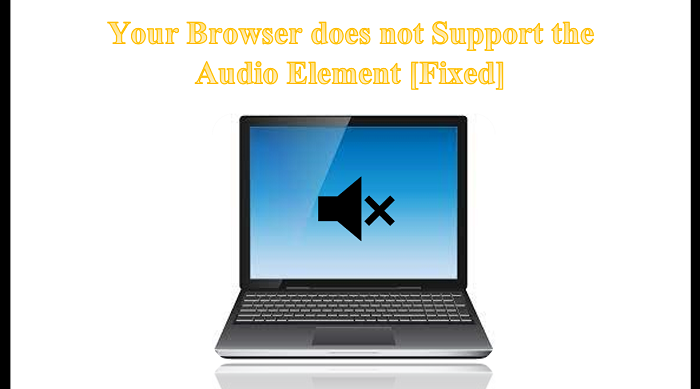
Your browser does not support the audio element
Here are the following methods to fix the issue if your Chrome browser is not supporting the audio element:
- Unmute site
- Check your Sound Setting
- Clear Cache and Cookies
- Allow Audio to play sound
- Check for Driver Update
Let’s fix this issue by using the above methods one by one.
1] Unmute site
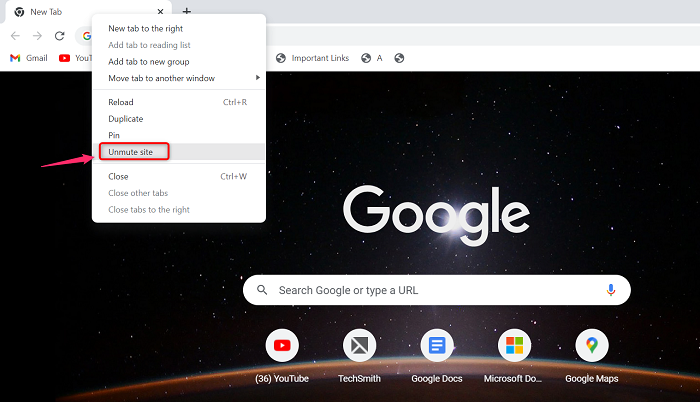
If you face this issue, then firstly, you should check whether your web page is muted or not. Now to check it, follow the below steps-
- Go to the web page where you are supposed to listen to some audio
- Right-click on its tab
- Check whether the site is muted or not
- If the site is muted, you will see Unmute site option
- Now, click on the Unmute site option
If the problem will be from here, then definitely it will resolve this issue.
2] Check your Sound Setting
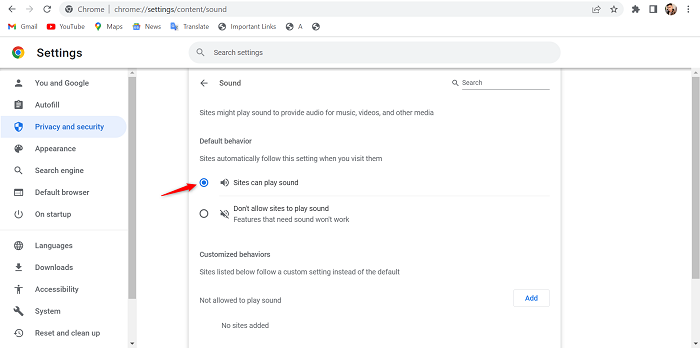
If your web page is Unmuted and in spite of this you are also facing this problem on your browser then you need to check your sound setting. You can check your sound setting by following the below steps.
- Navigate to your browser and click on the three dots in the upper right side
- Then, go to the Settings option and click on it
- The Settings page will be open, now click on the Privacy and security on the left pane
- Click on the Site Settings to open it
- Scroll down the page and go to the Content section
- In the Content section, click on the Additional content settings
- Now, click on the Sound to open it
- Ensure that the Sites can play sound options are checked
- If it is Unchecked then click on it to check it
- After that, close the Settings tab
3] Clear Cache and Cookies
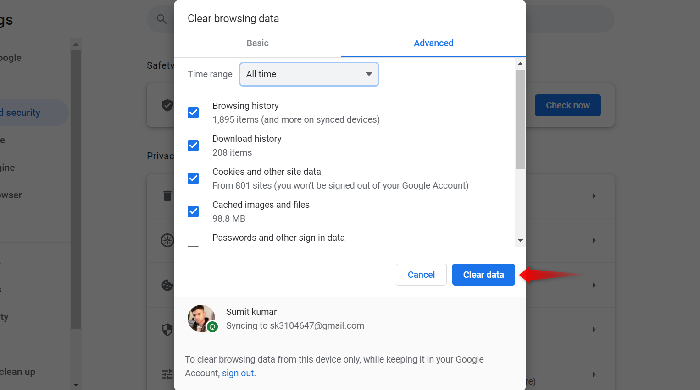
The excess amount of cache and cookies can be the reason why your browser is not supporting the audio elements. So, in this case, you need to clear your browser cache and cookies. To do that, follow the below steps.
- Navigate to your browser and click on the three dots on the upper right side
- Click on the More tools > Clear browsing data…
- Switch to the Advanced tab and set the Time range to the All time
- Make sure that the first four option is checked as mentioned in the above image
- Now, click on the Clear data
- Now, close the Settings tab and try to play audio on the web page or where you want to play
4] Allow Audio to play sound
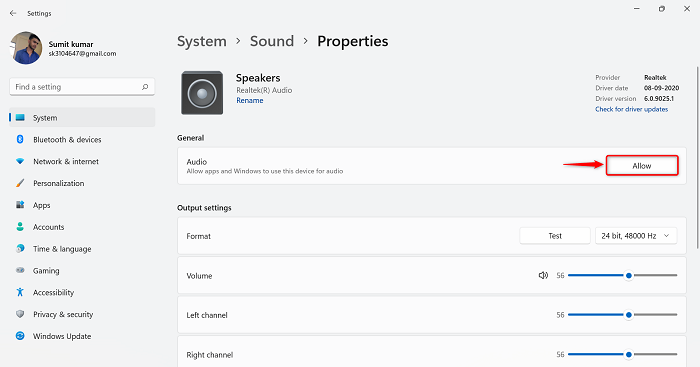
Follow the below steps to allow the audio to play sound.
- Go to the Windows Settings and click on the System on the left pane
- Then, click on the Sound option
- Now, go to the Advanced section and click on the All sound devices
- Now, click on the Speakers
- In the Audio option, make sure that your audio is Allowed to play sound on this device
- If it is not allowed, click on the Allow
- Exit the Setting page and try to play audio
5] Check for Audio Driver Updates
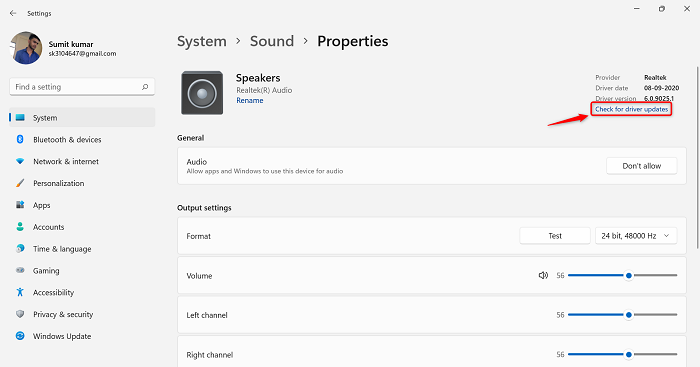
If your browser is not supporting the audio element, then your audio driver may be outdated. In this case, you should check your audio driver for updates.
- Navigate to the Settings > System > Sound > Speakers by following the above method
- Now, on the Speakers page click on the Check for a driver update on the upper right side
- If updates are available then click on it to update it
- Close the Settings page and try to play audio in the browser
If there is any problem with the outdated audio driver, this will fix the issue.
What browser supports the audio element?
There are different browsers that support different types of audio. And you can not find an audio codec that is supported across all browsers. Below is some browser that supports the audio element.
- Chrome browser supports WAV, MP3, AAC, and Ogg
- Microsoft Edge supports WAV, MP3, AAC, and Ogg
- Firefox browser supports WAV, MP3, and Ogg
- Opera browser supports WAV, MP3, and Ogg.
Also read: How to control Audio and Video Playback on Google Chrome
How do I enable audio in HTML?
The <audio> tag is used to enable audio in HTML. It has embedded sounds in a document such as music, mp3, or other audio streams. It may contain one or more audio sources, represented using the src attribute or the <sources> element.
Also read: Audio and Video does not Play in PowerPoint
How can I add audio to my website?
By using a sound hosting site, such as SoundCloud or Mixcloud you can embed audio to your website. You just need to do is upload the file and receive an HTML embed code. Then copy and paste the embed code into the web page’s code or WYSIWYG site editor.
How do I convert audio files?
You can convert any audio files supported by Audacity to 3 file types such as MP3, WAV, and Ogg Vorbis.
- Go to Audacity, click on Project and select Import Audio
- Navigate to the file you want to convert and click to open it
- Click on File, now you have 3 Export As options.
- Select the option with the file type you want to convert to
- Name and place your file and click on Save
- A dialog box will open with an option for metadata. You can edit it or leave it blank
- Now, click on OK, and close the Audacity.
That’s it!
Leave a Reply